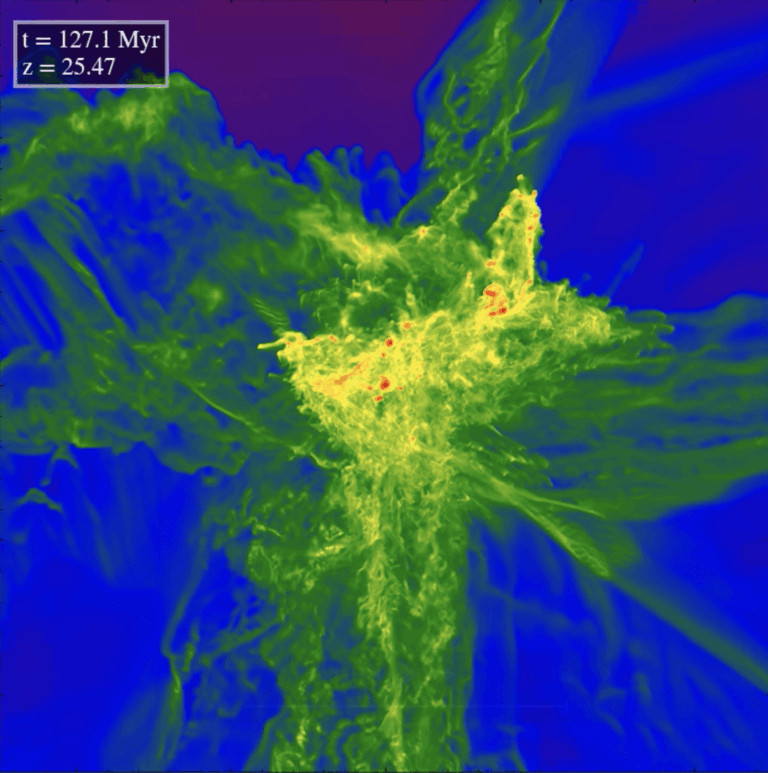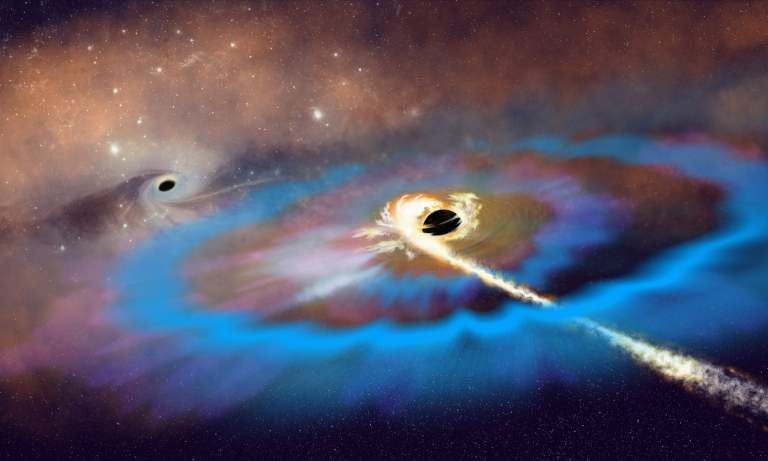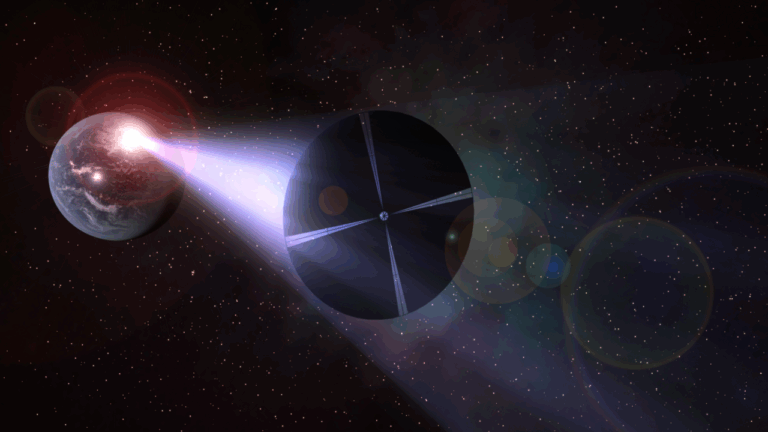Key Takeaways:
That seems to have changed last week.
On April 28, two radio telescopes spotted a new FRB-like pulse originating from a flaring magnetar located some 30,000 light-years away, putting it firmly within the Milky Way. And just a few days later, they detected another burst from the same nearby object.
With the detection of these events, astronomers are optimistic they’ve spotted a nearby example of a possible source of distant FRBs. Namely, highly magnetic neutron stars.
Making a magnetar
A neutron star is the compact core left over after the death of a once-massive star. Because neutron stars have no internal fusion, their uncontested gravity causes them to collapse until a mass a few times that of the Sun is compressed into a ball of neutrons about 12.5 miles (20 kilometers) wide. But sometimes, neutron stars also sport prodigious magnetic fields. And astronomers call these stars magnetars.
The magnetic field of a magnetar is about a hundred million times stronger than any human-made magnet. That’s strong enough that a magnetar would horrifically kill you if you got within about 620 miles (1,000 km) of it. There, its insanely strong magnetic field would pluck electrons from your body’s atoms, essentially dissolving you.
Though much about magnetars remains unknown, astronomers do know they are capable of releasing occasional giant flares — strong bursts of radiation across the electromagnetic spectrum. As such, astronomers have theorized that FRBs could simply be flaring magnetars located in distant galaxies, even though they had never before detected an FRB from any known nearby magnetars.

Want to learn more about pulsars and other extreme objects in our universe? Check out our free downloadable eBook: Exotic objects: Black holes pulsars, and more.
A nearby flaring magnetar
Shortly after the initial detection of a possible FRB-like flare from a nearby magnetar last week, researchers sent two telegrams via The Astronomer’s Telegram (ATel), a web-based bulletin board where astronomers can post about pressing observations. The ATels outlined that a bright radio burst was spotted in the direction of a magnetar in our Milky Way called SGR 1935+2154, located in the constellation Vulpecula. It’s important to note, however, that ATels are not published papers. They instead serve as a way for astronomers to announce time-critical discoveries to the larger astronomical community.
Both of the telescopes involved in the initial detection — the Canadian Hydrogen Intensity Mapping Experiment (CHIME) and the Survey for Transient Astronomical Radio Emission 2 (STARE2) in California — are designed to monitor large areas of the sky for FRBs or FRB-like radio signals. The first radio burst, which lasted just 30 milliseconds, had several FRB-like properties. It was also the very first time this magnetar had ever been detected in radio frequencies.
There was one key difference between this flare and more distant FRBs, though. If this burst happened at the distance of the closest-known FRB beyond the Milky Way, it would be about 1/1,000 as bright. (X-ray telescopes also reported via ATels the detection of a “burst forest” of radiation at the same time as the radio burst, albeit about a hundred times weaker than a typical giant flare from a magnetar.) A few days later, the Five-hundred-meter Aperture Spherical radio Telescope (FAST) in China detected another burst from the magnetar, which indicates it’s entering an active radio phase.
Although much fainter than distant FRBs, spotting nearby bursts with FRB-like properties is a startling discovery for astronomers who have long wondered whether fainter versions of FRBs exist close to Earth, even if they rarely flare. “We can imagine FRB intensities occur on a range of luminosities, and we are only detecting the brightest ones now,” says Shri Kulkarni, an astronomer at the Caltech and project investigator for STARE2. This assumption, combined with their data, led the STARE2 group to go as far as stating in their bulletin that “we conclude active magnetars are a source of FRBs at extragalactic distances.”
The CHIME radio telescope team has not yet drawn such a strong conclusion, but they are nonetheless also excited about the new nearby burst. “It’s certainly not as bright as the FRBs coming from far away,” says Paul Scholz, an astronomer at the University of Toronto and lead author of the CHIME bulletin. “But it’s definitely a tempting connection to make.”
A long way to go
It is far too early to draw a firm conclusion about whether this relatively faint FRB-like signal is the first example of a galactic fast radio burst — making it the smoking gun to unlocking the entire FRB mystery. And there are also still many preliminary questions left to answer. For example, how often do these fainter bursts happen? Are they beamed so not all radiation is equally bright in all directions? Do they fall on a spectrum of FRBs with varying intensities, or are they something entirely new? And how are the X-ray data connected?
These are the questions that need to be understood and further analyzed before a definitive conclusion can be made. But until then, astronomers are excited to know this latest burst may finally lead to an answer to the years-long mystery about the origin of FRBs. And until they have that answer, they will keep scanning the skies for bursts both near and far.










